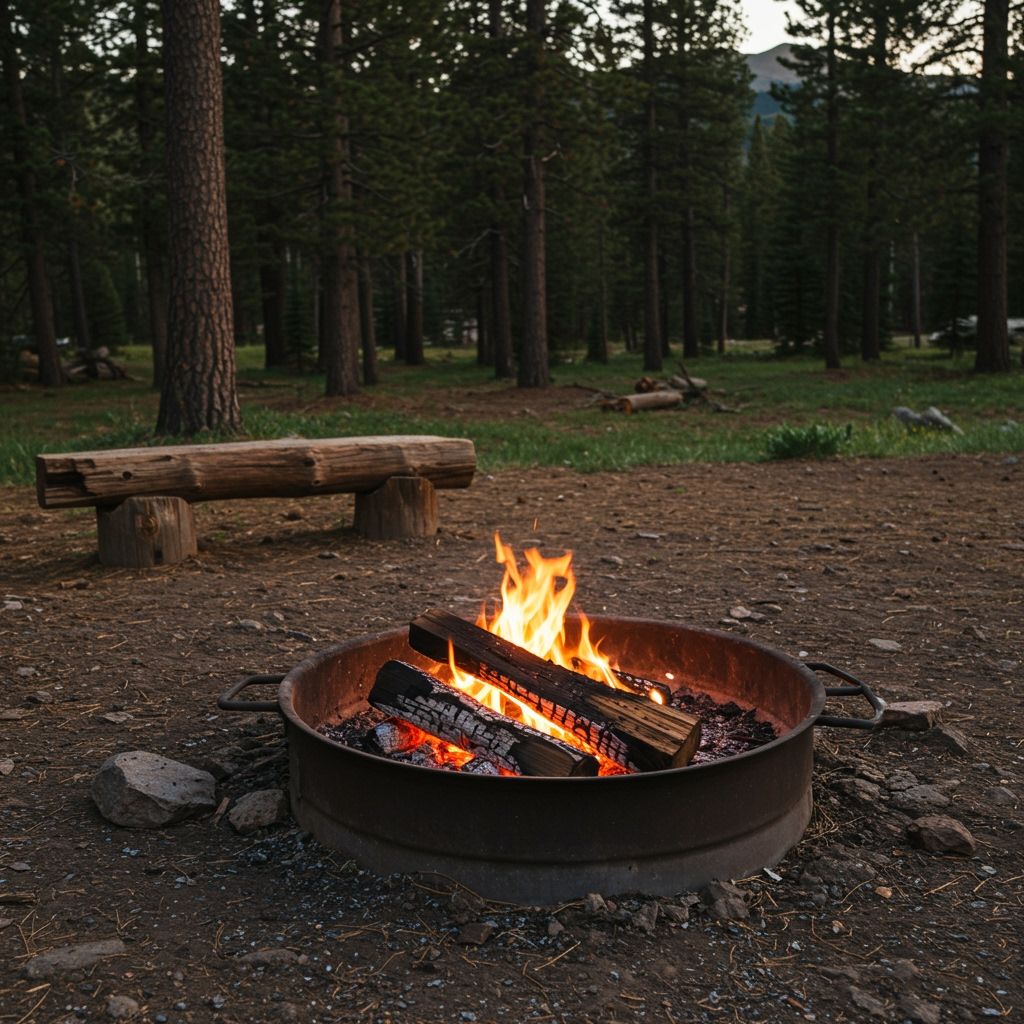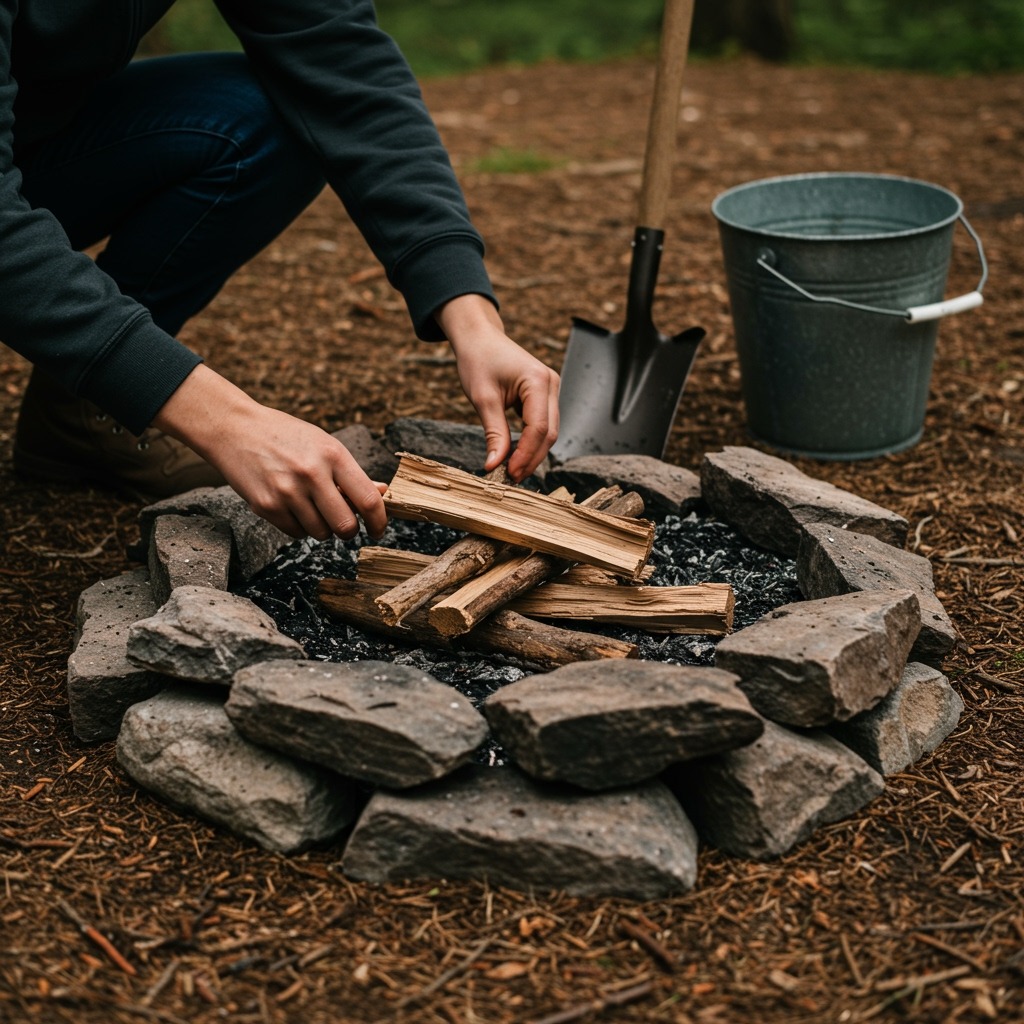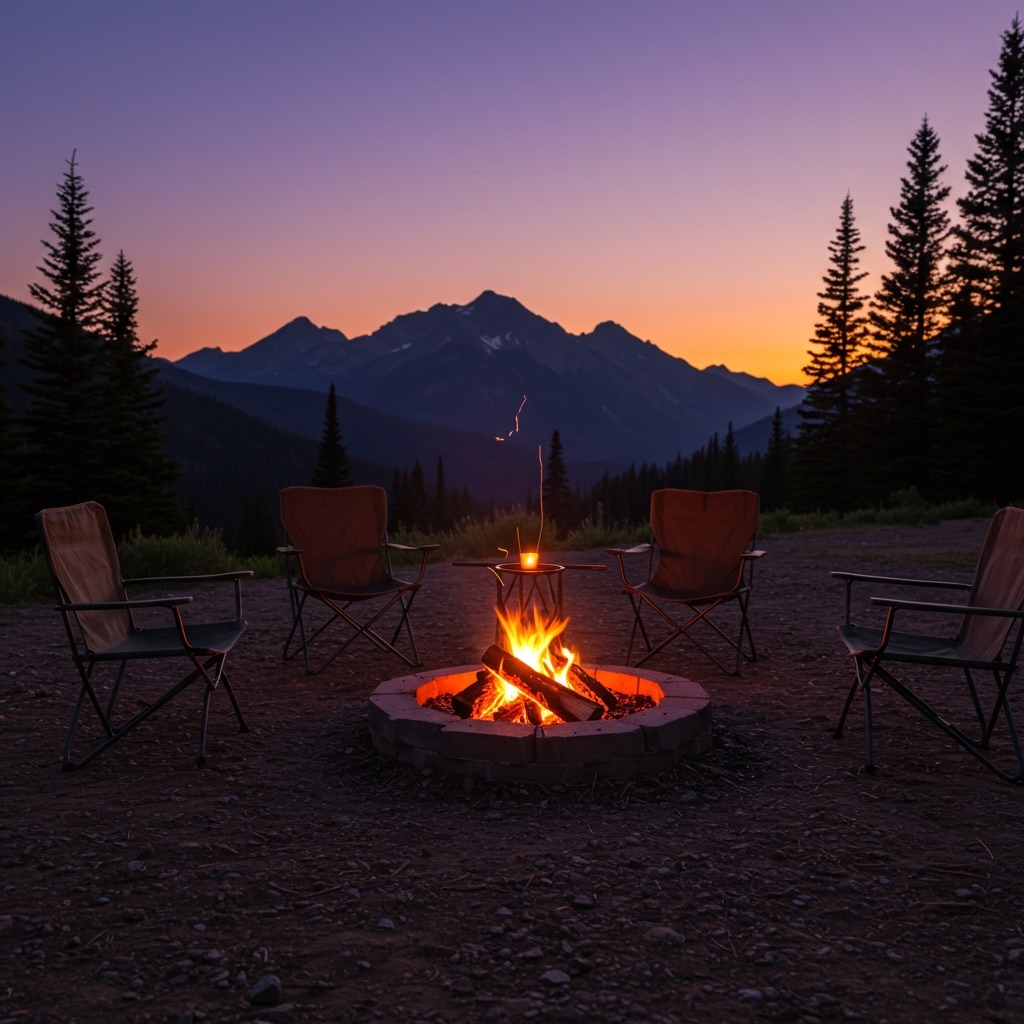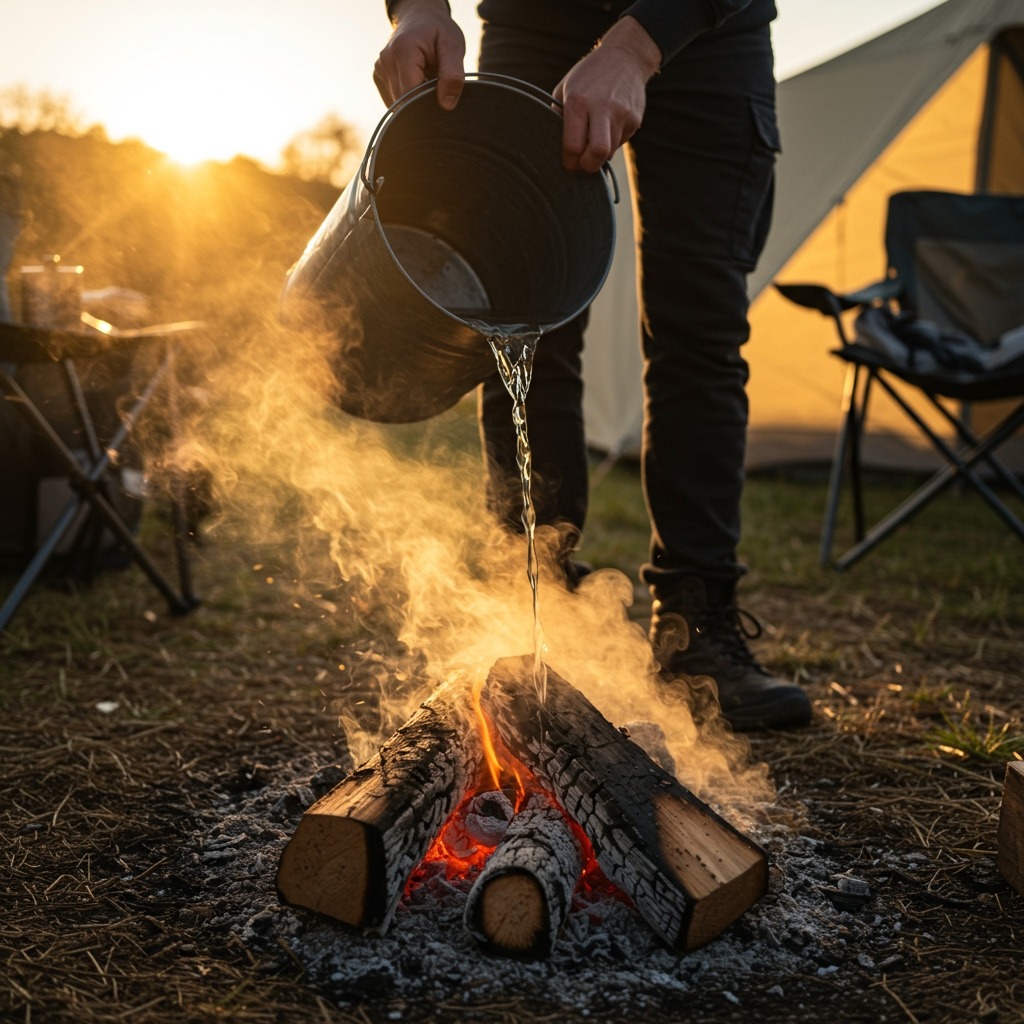There’s something truly magical about a Colorado campfire. It’s the flickering heart of any outdoor adventure, casting a warm glow on laughter, stories, and the vast, starlit skies of the Rockies. For many, it’s the quintessential camping experience. But in a state as beautiful and dry as Colorado, that crackling flame comes with a serious responsibility. Wildfires are a constant threat, and understanding the rules, practicing extreme caution, and knowing how to properly manage your fire isn’t just good etiquette—it’s absolutely critical.
My goal here is to make sure your Colorado campfire memories are safe, responsible, and unforgettable for all the right reasons. We’ll dive deep into everything you need to know: from understanding fire restrictions that can change daily, to the step-by-step process of building a safe fire, and the non-negotiable method for putting it out completely. You’ll learn how to enjoy the warmth and ambiance while protecting our incredible natural landscapes.

Understanding Colorado’s Fire Restrictions: Know Before You Go
This is the golden rule for any Colorado campfire: know before you go. Fire danger can shift rapidly due to weather, drought, and vegetation. What was allowed yesterday might be banned today.
A. Why Restrictions Exist
Colorado’s stunning beauty is often matched by its dry climate and vast forests. This combination creates a high fire danger, especially during warmer months or periods of low precipitation.
- Protecting Forests and Wildlife: Uncontrolled fires devastate ecosystems, destroying critical habitats and taking years, even decades, to recover.
- Safeguarding Communities: Wildfires pose a direct threat to homes, infrastructure, and human lives, forcing evacuations and causing immense damage. Every precaution ensures everyone’s safety.
B. Types of Fire Restrictions (Stages)
Colorado agencies use a tiered system to communicate fire danger. These stages indicate what kind of fire activity is permitted.
- Stage 1 Fire Restrictions: This is the most common level of restriction when conditions are elevated. It means open flames are generally allowed, but with significant limitations:
- Fires must be confined to designated, permanent fire rings in developed campgrounds or picnic areas.
- No open campfires outside of these approved rings.
- Sometimes, charcoal grills might be restricted, or specific times for campfires might be imposed.
- Explosives, fireworks, and tracer ammunition are typically banned.
- Stage 2 Fire Restrictions: When fire danger becomes extreme, restrictions tighten significantly:
- No open flames whatsoever. This means no campfires, no charcoal grills, and often no smoking outside of enclosed vehicles or buildings.
- Only liquid or gas-fueled stoves (like your camp stove) and propane fire pits are usually allowed.
- Specific activities like welding or using chainsaws might also be restricted.
- Full Closures: In the most severe conditions, entire areas, forests, or even national parks may be completely closed to public access. This means no camping, no hiking, and no fires of any kind. This level of restriction often coincides with very high fire danger, making safety paramount when considering things to do while camping.
C. How to Check Current Conditions
Never assume you know the rules. Always verify the current fire restrictions for your specific destination.
- Official Sources are Key:
- Colorado.com: Their “Colorado Campfire Restrictions” page is an excellent starting point, often linking to more specific regional information.
- US Forest Service (USFS): If you’re camping in a National Forest (like the Pike-San Isabel or White River National Forest), check the specific forest’s website or their Rocky Mountain Region Fire Management page.
- Bureau of Land Management (BLM): For BLM lands, consult their official fire restrictions page.
- Colorado Parks and Wildlife (CPW): For state parks and state wildlife areas, check the CPW website for park-specific regulations.
- County Sheriff’s Offices: Local county sheriff departments often issue and enforce bans, so checking their websites is crucial if you’re unsure.
- National Parks: If you’re visiting Rocky Mountain National Park, for example, always check the National Park Service website for that specific park.
- Online Resources: Many aggregates exist, but always cross-reference with official government sites. A good external resource to quickly check statewide conditions is the Colorado Division of Fire Prevention and Control’s website, often found via a quick search for “Colorado fire ban finder.” It provides a snapshot of current restrictions across the state.
Building Your Colorado Campfire: Safety First, Always

Once you’ve confirmed that a Colorado campfire is allowed, follow these critical safety steps. There’s a right way to build a fire, and it’s all about control.
A. Location, Location, Location
Where you build your fire is as important as how you build it.
- Designated Fire Rings Only: You should only build a campfire in an established fire ring or a metal grill provided by the campground or land agency. Creating your own fire pit is illegal and extremely dangerous.
- Clear 10-Foot Radius: Ensure at least a 10-foot radius around your fire ring is clear of all flammable materials. This means no grass, leaves, pine needles, or anything that could catch fire. Scrape down to bare mineral soil.
- Away from Overhanging Branches: Look up! Make sure there are no low-hanging branches or other vegetation directly above your fire that could ignite.
- Away from Structures and Tents: Position your fire well away from your tent, vehicles, and any other structures. This is a basic rule for camping for beginners that experienced campers live by.
B. Proper Materials
What you burn matters. Only use appropriate fuel.
- Local, Dead and Downed Wood: Use only dead and downed wood that you can easily break by hand, found near your campsite. This helps prevent the spread of forest pests and diseases.
- Certified Firewood: If you bring wood, ensure it’s certified heat-treated or pest-free. Never transport firewood long distances.
- Never Burn Trash, Plastic, or Treated Wood: These materials create toxic fumes, leave harmful residue, and can throw off sparks. They ruin the natural environment and are often illegal to burn.
C. Tools You Need
Always have these readily available and before you light the match.
- Shovel: A proper shovel, not a toy one, is essential for clearing the area, managing the fire, and stirring ashes.
- Water Bucket: A full bucket of water (at least five gallons) must be within arm’s reach of your fire at all times. This is your primary defense against a spreading spark.
- Fire Extinguisher (Optional but Recommended): For added peace of mind, especially if you’re car camping, a small fire extinguisher can be a valuable addition to your gear.
Tending Your Fire: Maintain Control

Once your Colorado campfire is lit, it’s not a set-it-and-forget-it situation. Constant vigilance is key.
A. Size Matters
- Keep Fires Small and Manageable: A small, controlled fire is far safer than a roaring bonfire. A good rule of thumb: don’t build a fire larger than what you can easily step over. Smaller fires are also easier to put out completely.
B. Never Leave Unattended
- Even for a Moment: A fire can spread in seconds. Never walk away from your fire, even to grab something from your tent or cooler. If you need to leave, even temporarily, put the fire out completely. For more tips on managing your campsite, check out these useful camping hacks.
C. Watch for Wind
- Gusts Can Quickly Spread Embers: Even a gentle breeze can carry hot embers outside your fire ring. If the wind picks up, extinguish your fire immediately. It’s simply not worth the risk.
D. Kids and Pets
- Keep a Safe Distance and Supervise: Establish a clear boundary around the fire for children and pets. Supervise them constantly around the flame to prevent accidents.
Extinguishing Your Colorado Campfire: “Drown, Stir, Feel”

This is the most critical step of all. An improperly extinguished fire is a wildfire waiting to happen. Embrace the “Drown, Stir, Feel” method as your mantra.
A. Drown It
- Pour Water on All Embers, Ash, and Wood: Don’t just splash; thoroughly douse every part of the fire with generous amounts of water. You should hear hissing.
- Use More Water Than You Think You Need: There’s no such thing as too much water when putting out a campfire.
B. Stir It
- Use Your Shovel to Stir the Ashes and Remaining Embers: Break apart any unburned logs or charcoal. Expose everything to the water. This ensures heat isn’t trapped beneath seemingly cold ash.
C. Feel It
- Touch All Surfaces with the Back of Your Hand: Carefully and cautiously touch all components of the fire pit: the ashes, the remaining wood, the rocks of the fire ring. If it’s warm, it’s not out.
- Repeat: If you feel any warmth, immediately repeat the “drown, stir, feel” process. Do not leave until the fire pit is completely cold to the touch. This step is non-negotiable.
D. Why This Is Non-Negotiable
A seemingly dead ember can smolder for hours, even days, and then reignite into a full-blown wildfire when conditions are right, especially with Colorado’s dry climate. Every wildfire started by an abandoned campfire is preventable. You want to leave no trace that you had a fire at all.
Alternatives to a Traditional Campfire (When Bans Are On)
Sometimes, despite your best intentions, a traditional Colorado campfire just isn’t an option due to restrictions. Don’t let that dampen your spirits!
- Propane Fire Pits: These are a fantastic alternative. They provide warmth and ambiance without the risk of embers or the need for firewood. They’re typically allowed even during Stage 2 fire restrictions, but always verify.
- Gas Stoves for Cooking: Your trusty camping stove is essential for cooking meals when open flames are banned. This is where you can still whip up delicious easy camping meals for family even without a roaring fire.
- Flashlights and Headlamps for Light: Embrace the quiet darkness. Use your portable lighting to illuminate your camp.
- Enjoying the Stars and Sounds of Nature: Without the distracting glow of a campfire, you’ll be amazed at the incredible stargazing opportunities in Colorado’s dark skies. Listen to the sounds of the wilderness around you.
Beyond the Flame: Enjoying Your Colorado Campfire Experience
Beyond the safety, a Colorado campfire is about the experience.
A. Campfire Cooking
- Classic Delights: S’mores are a given. But think beyond: foil packet meals cooked directly in the coals, hot dogs on sticks, or even cast iron skillet camping breakfast ideas over the dying embers. There’s a true art to cooking over an open flame.
B. Stories & Songs
- The True Essence: This is where memories are made. Sharing stories, singing songs (even badly!), or simply enjoying the quiet companionship around the warmth of the fire.
C. Stargazing
- Colorado’s Dark Skies: Away from city lights, the Colorado night sky puts on an unparalleled show. Lay back, watch for shooting stars, and appreciate the vastness above you.
FAQ: Your Colorado Campfire Questions Answered
Can I have a campfire in a developed campground in Colorado?
It depends on current restrictions. In Stage 1 restrictions, yes, usually only in designated fire rings. In Stage 2 or during full closures, no. Always check current conditions for that specific campground.
What is “Leave No Trace” when it comes to campfires?
Leave No Trace principles for campfires mean ensuring your fire is completely out and cold to the touch, scattering cold ashes, and never leaving behind any trash or unburned materials in the fire pit. The goal is to leave no evidence you were there.
Are portable propane fire pits allowed during a fire ban?
Generally, yes, portable propane fire pits are allowed during Stage 1 and often Stage 2 fire restrictions, as they don’t produce embers. However, always verify with the specific land agency or county issuing the ban, as rules can vary.
How often do campfire bans happen in Colorado?
Campfire bans are very common in Colorado, especially during the spring, summer, and fall months when conditions are dry. They can be implemented quickly and cover wide areas, so checking daily before and during your trip is essential.
What happens if I start a wildfire in Colorado?
Starting a wildfire, even accidentally, due to negligence or ignoring restrictions carries severe legal consequences, including significant fines, potential jail time, and responsibility for firefighting costs, which can run into millions of dollars. Always err on the side of caution.
